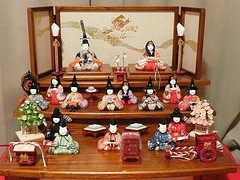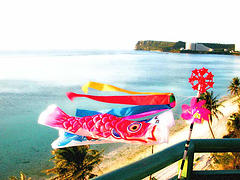Kodomo no hi Or Children Day
On the 5th of May ever year. It is considered a National Holiday and is meant to celebrate children (of course) and their varying personalities and to wish them happiness.
It was not always known as Children Day, however. Prior to 1948, when it was changed to Children Day and proclaimed a National Holiday, this day was called Tango no Sekku, or Boys Day. This was also known as the Feast of Banners.
The reason behind the Feast of Banners tag is that tradition dictates that families fly fish banner or fish kites on this day. These fish are actually koi and the banners have come to represent the hopes of the parents for their children in particular, their sons. Koi fish are known to be full of energy and courage and they can swim against strong currents.
Today, Children Day is celebrated all over the country for both boys and girls. Many Japanese communities outside of Japan also celebrate with festivities of their own. Indeed, those fish kites flying are a sight to behold.
For Doll Lovers Only: Hinamatsuri

Japan is well known for its exotic festivals that attract people from all over the world. For the Japanese, though, these festivals hold much deeper meanings than merely showcasing what their culture has to offer. One of the longest running traditions in the Japanese culture is called the Hinamatsuri or Japanese Doll Festival.
Hinamatsuri started way back in the Heian Period and has its origin in an old Japanese belief that dolls contained evil spirits. In the old days, dolls made of straw were sent floating down the river out to the sea. The goal was to send away the evil spirits.
Today, the festival takes on a different light and is celebrated on the 3rd of March. The festival is actually aimed at little girls, wherein the family prays for their happiness, safety, and prosperity. Those who take part in the celebrations display special dolls if they have girls in the family.
Plum Festival

Japan is more well known for its Cherry Blossom Festivals rather than the Plum Festivals. However, that is not to say that the Japanese Plum, or Ume, does not hold an important place in Japanese culture. Introduced from China, the Ume is the harbinger of spring. Plum trees flower in February and March and as such, Plum Festivals (Ume Matsuri) are held during these months.
Different places have their own festivals. Most of the time, though, these celebrations are held in public parks, shrines, and temples. Unlike cherry blossoms, plum blossoms emanate quite a strong fragrance. Imagine being surrounded by plum trees with flowers ranging from white to dark pink and inhaling the aroma that permeates the atmosphere.
